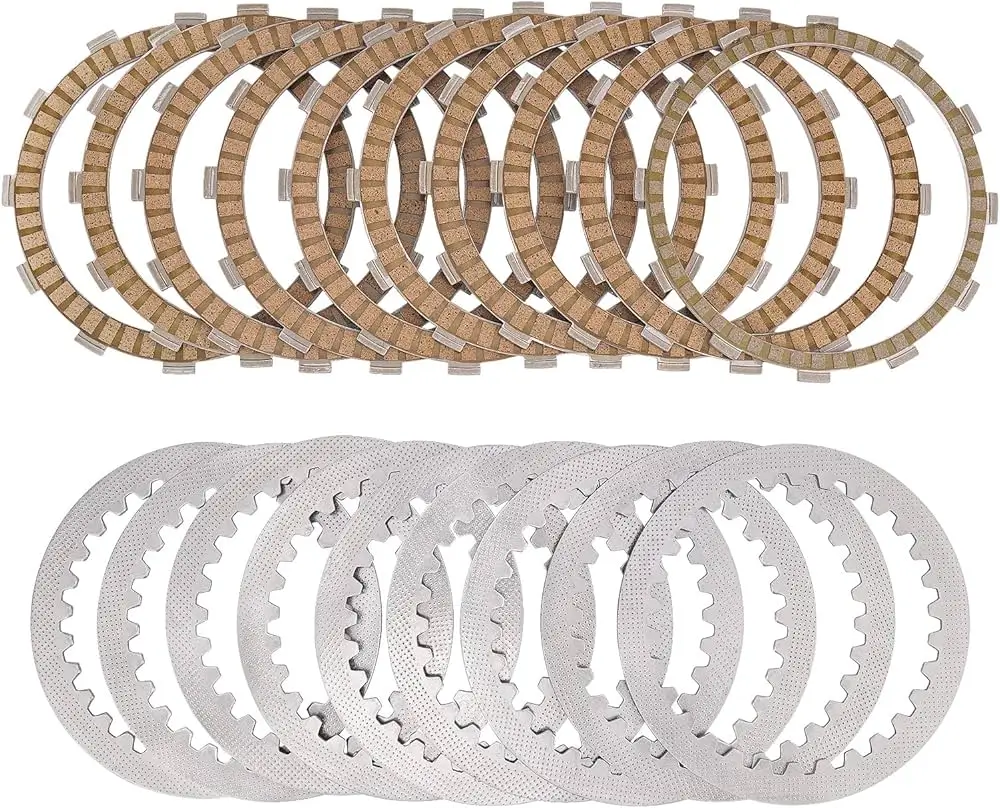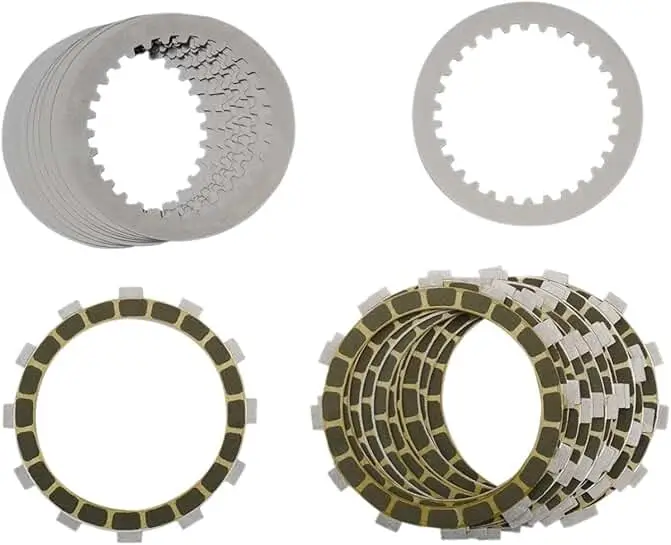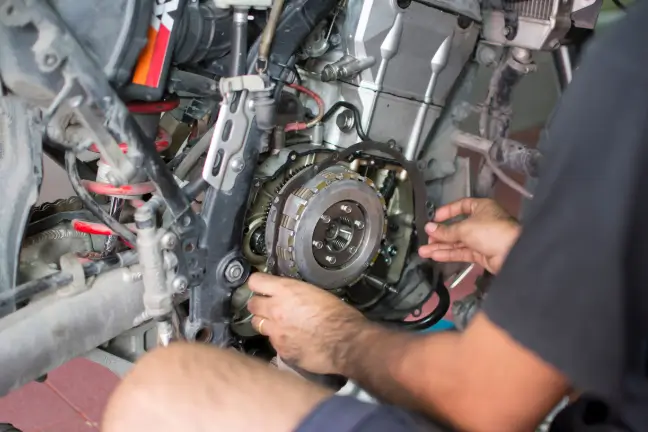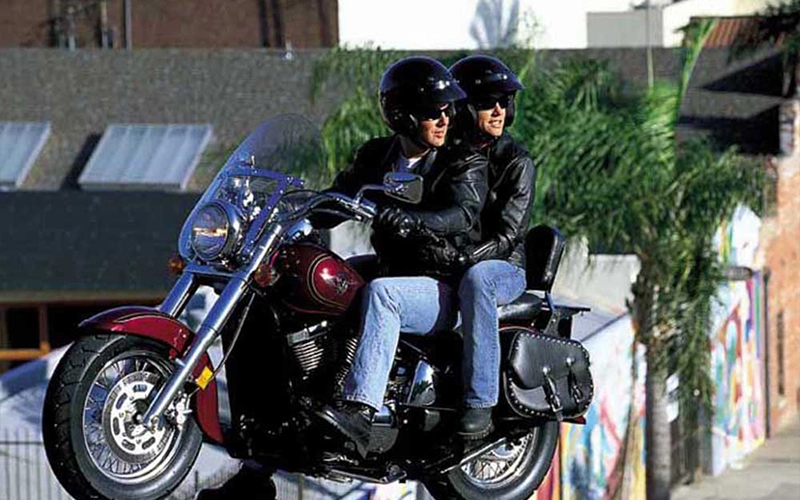The clutch system is an essential component of a motorcycle, responsible for smooth gear transitions and optimal power delivery. Choosing the right motorcycle clutch plates can significantly enhance your bike’s performance, ensuring better control and longevity. This guide will help you understand the different types of clutch plates, their materials, and how to pick the best ones for your riding needs.
Understanding Motorcycle Clutch Plates
What Do Clutch Plates Do?
Clutch plates serve as a system to connect and disconnect engine power from the transmission, hence delivering steady shifting and regulated acceleration. Clutch plates that have reached their end of life or are of poor quality generate gear shift problems and performance degradation and can trigger slippage.
Types of Motorcycle Clutch Plates
There are two main types of clutch plates, each serving a specific function within the clutch system:
1. Friction Plates
- Made from materials like cork, Kevlar, carbon fiber, or sintered metal.
- Provide grip between the clutch plates to transfer power efficiently.
- Wear out over time due to friction and heat.
2. Steel (or Driven) Plates
- Made of steel or aluminum to provide durability and strength.
- Work with friction plates to complete the clutch mechanism.
- Can warp under extreme heat, affecting performance.

How to Choose the Right Motorcycle Clutch Plates
Selecting the best motorcycle clutch plates depends on multiple factors, including riding style, bike type, and material preference.
1. Consider Your Riding Style
- Street Riders: Opt for Kevlar or organic friction plates for longevity and smooth engagement.
- Racing and Performance Riders: Carbon fiber or sintered metal plates provide better grip and withstand high temperatures.
- Off-Road Riders: Kevlar or sintered metal plates resist dirt and debris, offering better durability.
2. Choose the Right Material
- Organic (Cork or Paper-based): Affordable but wears out faster.
- Kevlar: Offers a good balance between longevity and smooth shifting.
- Carbon Fiber: Excellent heat resistance and durability, ideal for high-performance bikes.
- Sintered Metal: Best for aggressive riding and racing applications.
3. Check for Compatibility
Always refer to your motorcycle’s manual to ensure the clutch plates are compatible with your bike’s make and model.
4. Opt for Performance Kits if Needed
Some aftermarket brands offer complete clutch kits, including upgraded springs and plates for improved performance.

Top Motorcycle Clutch Plates for Better Control
1. Barnett Kevlar Clutch Kit
- Features high-friction Kevlar material.
- Suitable for both street and off-road motorcycles.
- Provides smooth engagement and extended lifespan.
2. EBC DRC-F Clutch Kit
- Heavy-duty friction plates with carbon fiber reinforcement.
- Includes upgraded springs for better power transfer.
- Ideal for dirt bikes and adventure motorcycles.
3. Hinson Racing Clutch Plates
- Race-proven durability and superior heat resistance.
- Used by professional motocross and superbike riders.
- Reduces clutch fade under extreme conditions.
4. OEM Clutch Plates
- Manufactured by original bike brands (Honda, Yamaha, Suzuki, etc.).
- Ensures perfect fitment and factory-level performance.
- Best for riders who prefer stock reliability.

Clutch Maintenance Tips for Longevity
Proper maintenance ensures smooth operation and extends the lifespan of your clutch plates.
1. Regular Inspection
- Check for wear, warping, or discoloration.
- Replace plates when thickness drops below the manufacturer’s specifications.
2. Proper Lubrication
- Use the recommended oil to prevent overheating and premature wear.
- Avoid using car engine oil, as it can cause clutch slippage.
3. Adjust Clutch Cable Tension
- Too much slack can cause incomplete disengagement.
- Too tight can lead to clutch slipping and overheating.
4. Avoid Excessive Clutch Slipping
- Holding the clutch partially engaged increases wear.
- Use proper shifting techniques to minimize strain.

FAQs About Motorcycle Clutch Plates
1. How often should I replace my motorcycle clutch plates?
Clutch plates typically last between 20,000 and 30,000 miles, but aggressive riding may shorten their lifespan.
2. How do I know if my clutch plates are worn out?
Signs of worn clutch plates include slipping, difficulty in shifting, reduced acceleration, and a burning smell.
3. Can I replace just the friction plates without changing the steel plates?
Yes, but it is recommended that steel plates be inspected for wear or warping and replaced if needed.
4. Are aftermarket clutch plates better than OEM?
Aftermarket plates often offer better performance and durability, but OEM plates ensure factory fitment and reliability.
5. What happens if I ride with worn-out clutch plates?
A worn clutch can lead to slipping, power loss, and potential damage to other transmission components.
6. Can I install new clutch plates myself?
Yes, with basic mechanical knowledge and proper tools, replacing clutch plates is a manageable DIY task.

Final Thoughts
Selecting the right motorcycle clutch plates is essential for smooth shifting, better control, and enhanced riding performance. Whether you choose OEM replacements or high-performance aftermarket options, always consider your riding style and maintenance habits. Keeping your clutch system in top condition ensures a more responsive and enjoyable ride.
For high-quality motorcycle clutch plates and accessories, visit AliWheels. We provide premium parts to enhance your riding experience.










